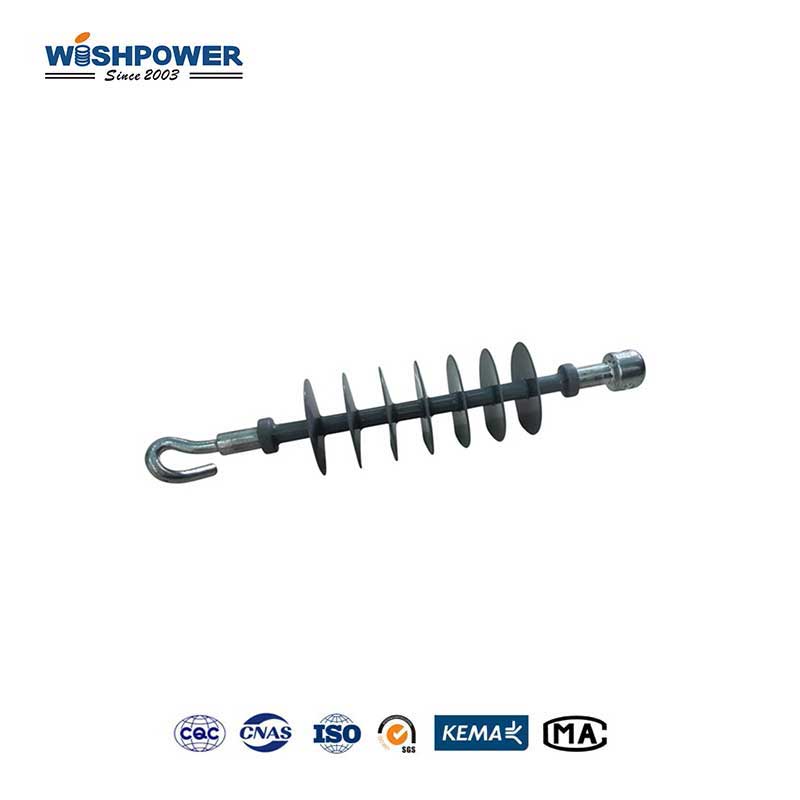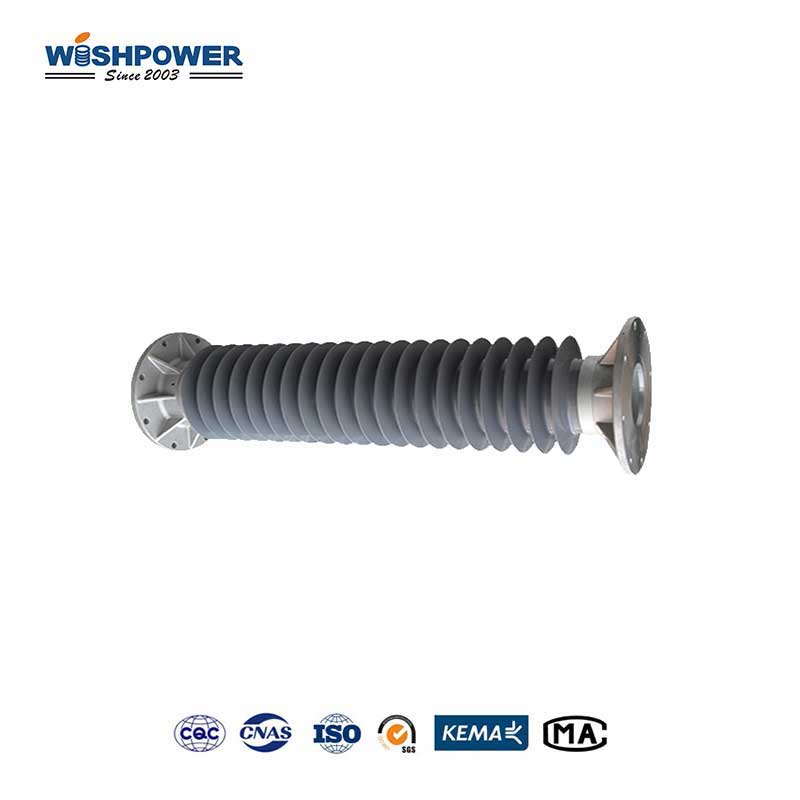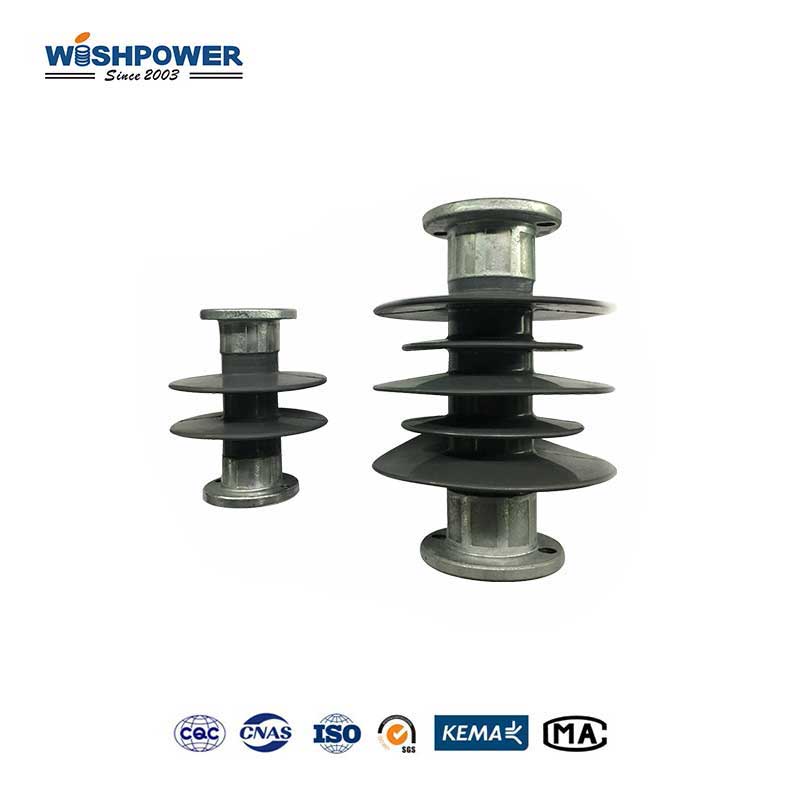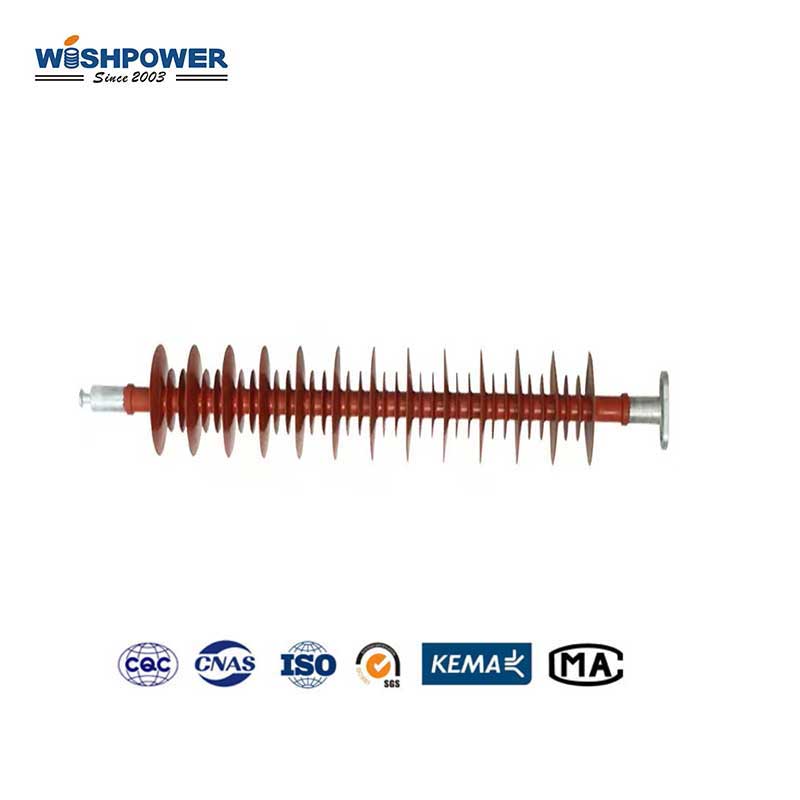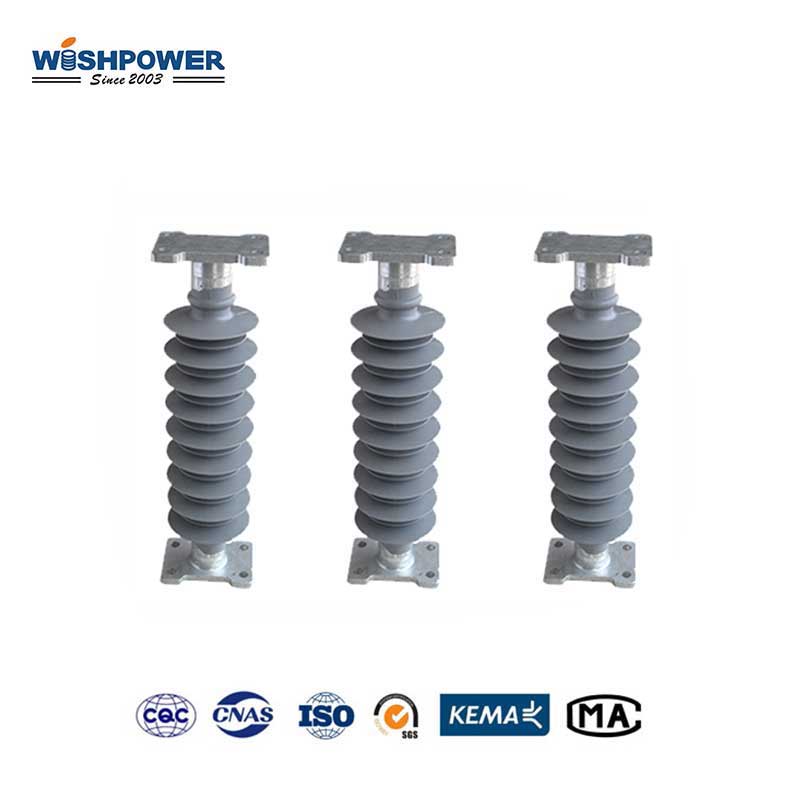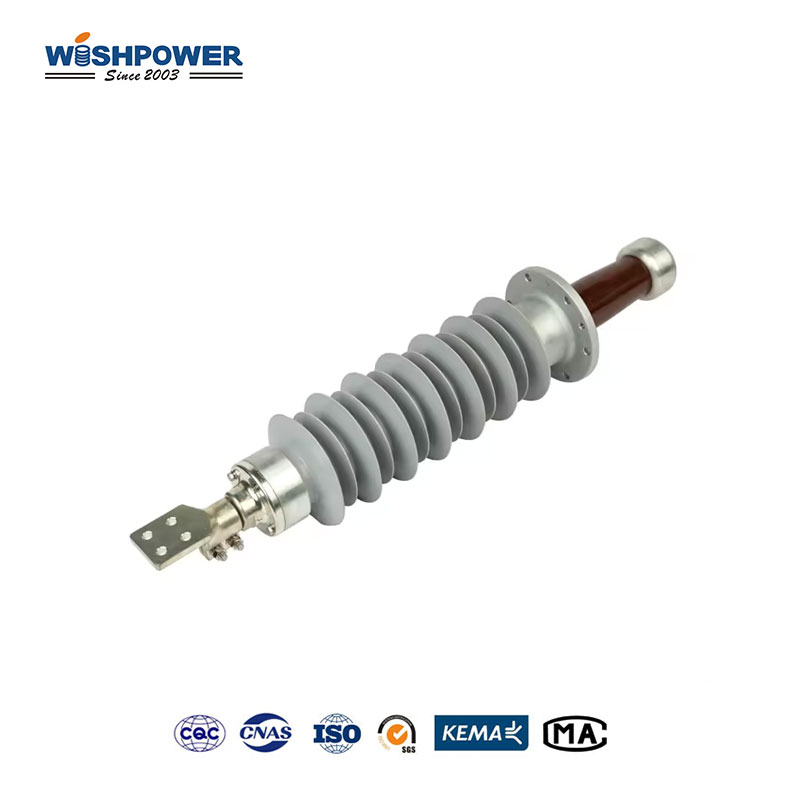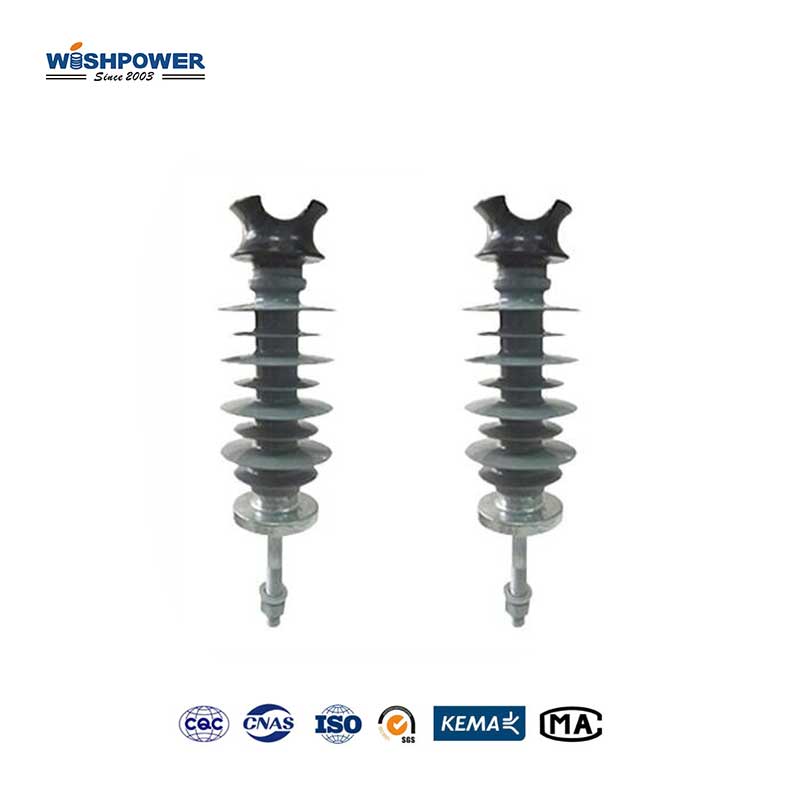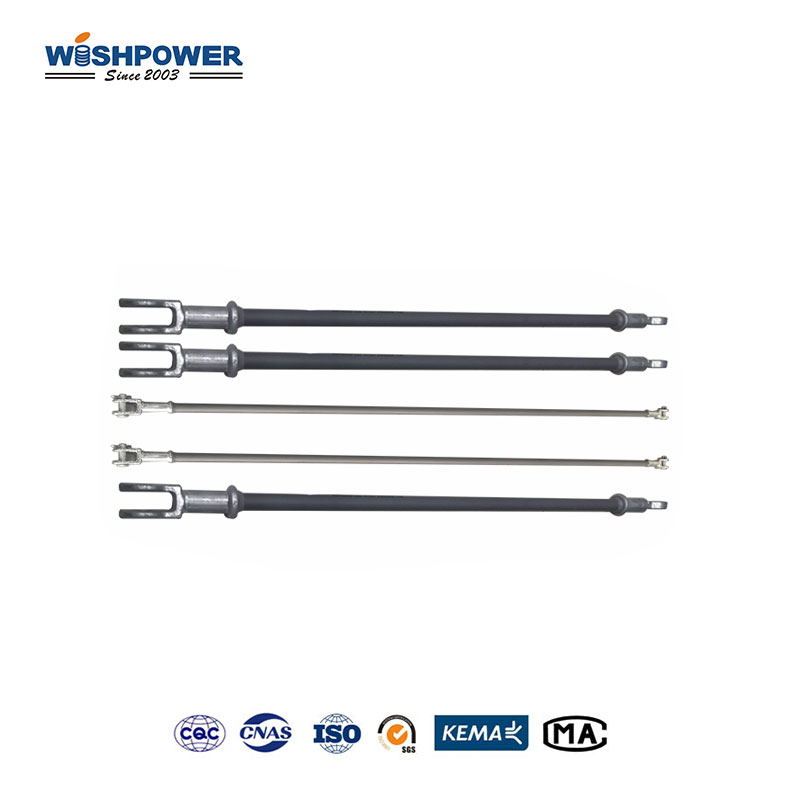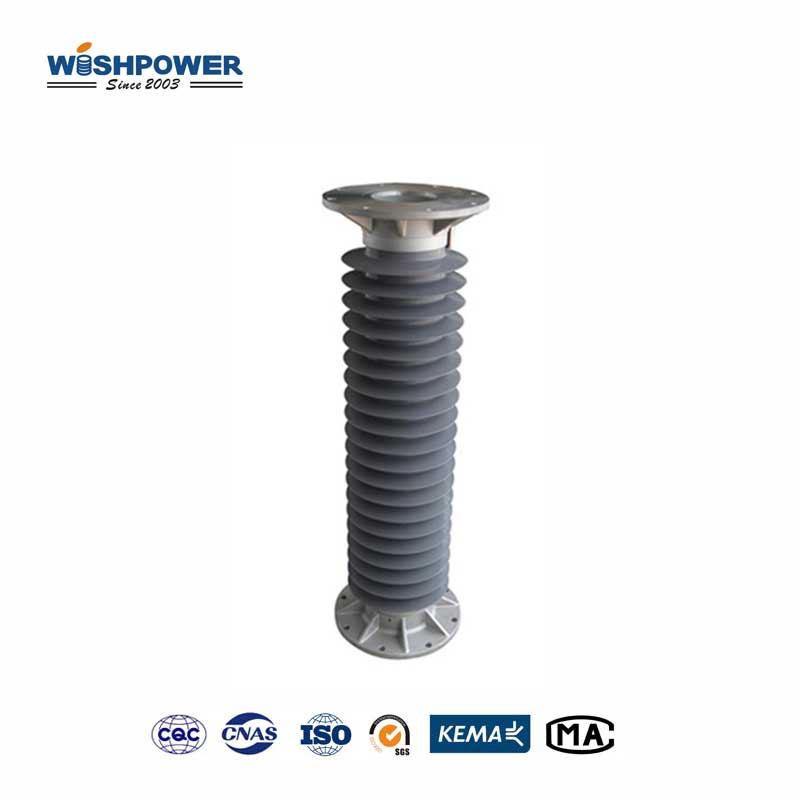Specification
| Type of Insulator |
FK-110(126)/(8/12.5) |
FK-36/(1/3/5) |
FK-66/10 |
FK-12/(1/3/5) |
FK-24/(1/3/5) |
| Specified Voltage |
110/126 kV |
36 kV |
66 kV |
12 kV |
24 kV |
| Specified Bending Withstanc Load |
8/12.5 kN |
1(3/5) kN |
10 kN |
1/3/5 kN |
1/3/5 kN |
| Section Length |
1350 mm |
210 mm |
984 mm |
138 mm |
190 mm |
| Min. Arcing Distance |
≥1070 mm |
≥190 mm |
≥704 mm |
≥106 mm |
≥147 mm |
| Tube Inner Diameter |
115 mm |
115 mm |
115 mm |
70 mm |
100 mm |
| Big Shed Diameter |
284 mm |
204 mm |
284 mm |
160 mm |
170 mm |
| Min. Nominal Creepage Distance |
4370 mm |
720 mm |
2900 mm |
248 mm |
480 mm |
| Lightning Impulse Withstand Voltage(Peak Value) |
≥550 kV |
≥110 kV |
≥325 kV |
≥72 kV |
≥81 kV |
| Power Frequency Withstand Voltage Min.Wet(RMS) |
≥245 kV |
≥46 kV |
≥140 kV |
≥24 kV |
≥34 kV |
| Reference Weight |
50 kg |
2.8 kg |
18 kg |
1.6 kg |
2.2 kg |
The table above is just one of our product parameters. If you want more information, please get in touch with info@wishpower.net
What is Composite Type Insulator?
Composite Type Insulator is a new kind of high voltage insulator for transmission and distribution lines with light structure, high mechanical properties, and good resistance to environmental factors. This is made up of a combination of materials, often a fiberglass reinforced polymer (FRP) core for strength and stability, and an outer polymeric coating of rubber, silicone rubber usually, to insulate and protect from pollution, moisture, and UV radiation. The composite structure is designed to sustain both mechanical stresses (overhead transmission line tension) and electrical stresses (high voltage and electrical discharge). Another important advantage is their hydrophobic surface that repels water and prevents the formation of conductive films allowing flashover in wet or polluted environments. It is also a self-cleaning property which reduces the maintenance needs, especially where there are high levels of industrial pollution or coastal conditions.
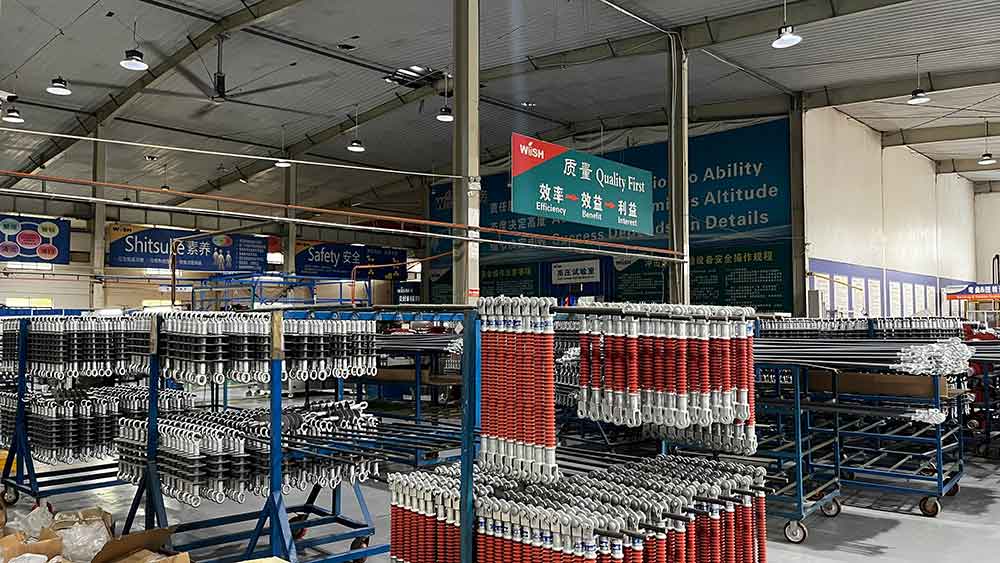
Composite insulator application
- High-voltage transmission lines
Overhead high-voltage transmission lines often use composite polymer insulators as suspension or strain insulators to support and isolate the conductors from the towers. Its lightweight design also assists in holding the overall weight of the tower down, which is especially useful for long sweeps or complicated topography. It is also resistant to pollution and weathering so it will serve you well in areas like the coast or an industrial area.
- Substations
It is also used in substations in various configurations as post insulators, equipment supports, and busbar insulators. Both of these traits make it suitable for use as a high mechanical strength, and high electrical insulation material that can withstand the electrical and mechanical loads in substations. Helping to improve operational reliability at the same time as reducing maintenance requirements.
- Electrification for railway systems
On railway electrification, it was referred to most for helping overhead contact systems that power electric trains. Their high mechanical tension resistance and environmental degradation make their operation along railway lines reliable for a long time in often rugged and exposed conditions.
- Distribution Lines
They are used in medium voltage distribution lines as line posts or pin insulators, to hold conductors and insulate. Because of their anti-pollution surface properties they are particularly suited for use in areas where conventional insulators are susceptible to pollution by dust, salt, or industrial pollutants, and may require more frequent maintenance.
- Under harsh and polluted environments
The Hybrid Insulator shines where there are high levels of pollution, such as industrial areas, coastal areas, and desert areas. The hydrophobic silicone rubber shell prevents dirt and water buildup, reduces the chance of electrical flashovers, and greatly reduces maintenance requirements. They are ideal for long-term use in harsh environments where conventional insulators may have performance problems.
- Compact modern transmission systems
Because of their small size and flexibility, they are extensively employed in compact transmission systems or designs aimed at minimizing right-of-way requirements or space availability. They are also suited to installation in areas with difficult conditions of use, such as mountainous areas, because of their lightweight.
- Circuit breakers and surge protectors
Besides transmission and distribution use, they are also widely used in surge protectors and circuit breakers. It has excellent electrical insulation and anti-aging properties and is a key component for lightning protection and switching surge protection of equipment.
Composite insulator material
- This is Fiberglass Reinforced Polymer (FRP) Core
The height of a Fiberglass Insulator is filled with fiberglass reinforced polymer (FRP) that provides mechanical resistance to carrying high voltage wires’ tension and load. The FRP core is a key component because it can bear the mechanical stress of the conductor and present high tensile strength. This core material is lightweight, strong, and corrosion-resistant orientation making it suitable for outdoor and stressful conditions.
- End fittings
End fittings of galvanized steel or aluminum serve to secure the mechanical connection of the tower and the conductor. The first stage of design is for these metal fittings to transfer mechanical loads without overstressing the insulation material. Additionally, they are treated with an anti-corrosive treatment to maintain lifetime outdoor usage.
- Sheds or Weather Shelters
Shelters that are umbrella-like extensions made of silicone rubber or other polymer materials are included as insulators, too. Increasing the creepage distance in these shelters will improve the performance of the insulator by having the current travel the long way. The insulator is designed this way so that it can resist leakage currents in polluted or wet conditions.
- Additives and Fillers
In some other cases, silicone rubber can be filled with aluminum hydroxide or another new additive to improve its work. Improved anti-tracking, anti-corrosion, and UV resistance will extend service life.
About Wishpower

Certificate

Hot Tags: Composite Type Insulator, Composite Insulator, China, Thailand, manufacturers, ISO factory, wholesale, KEMA, high quantity, best, price, low to high voltage






